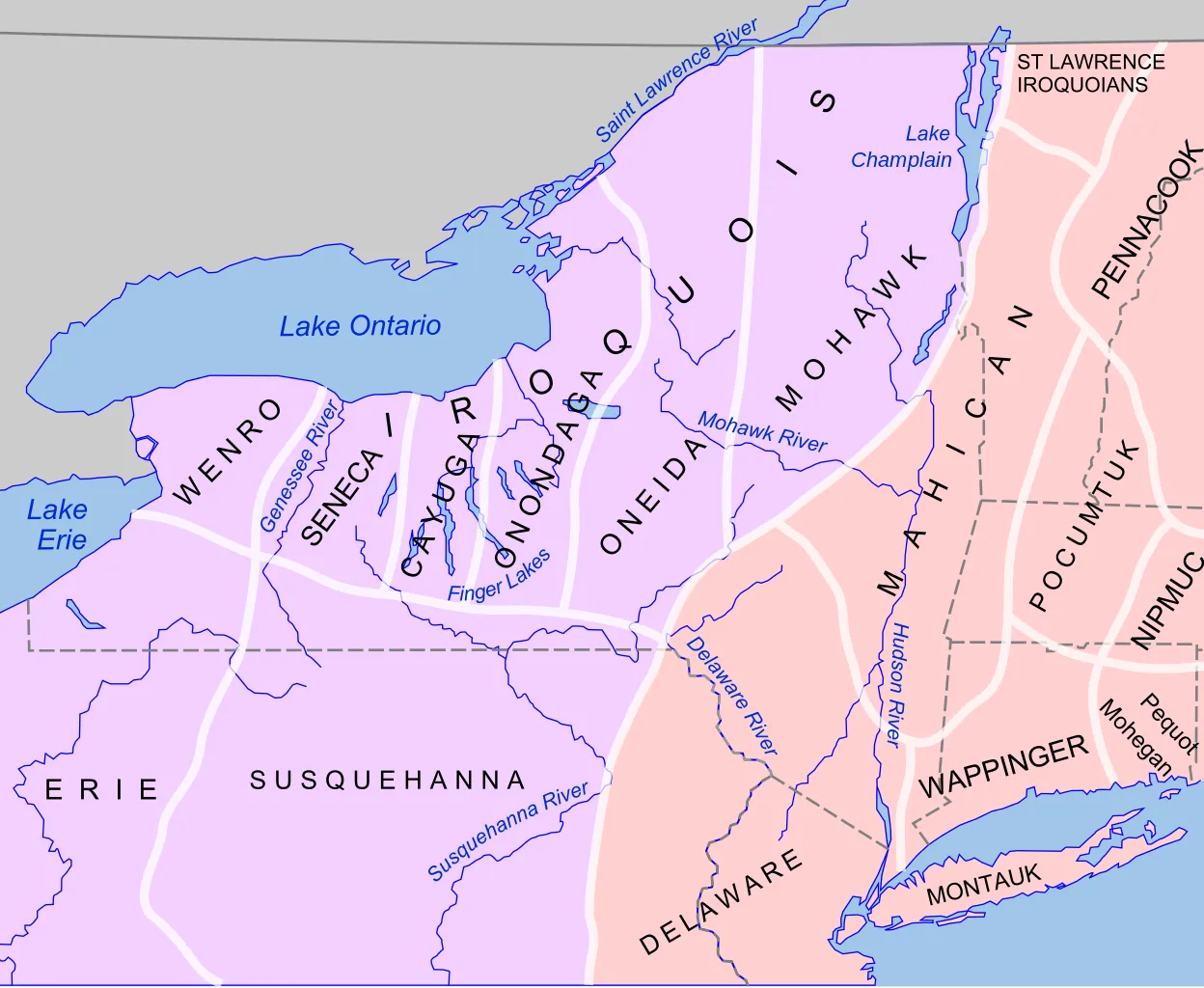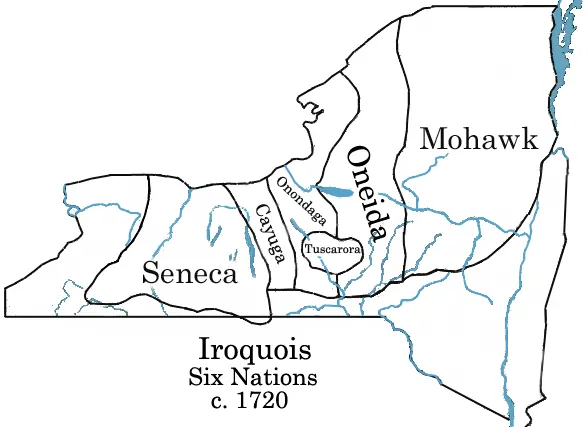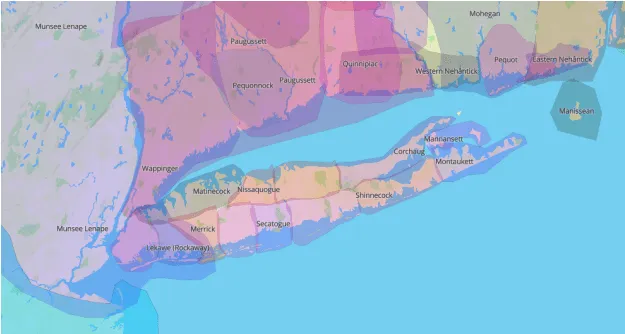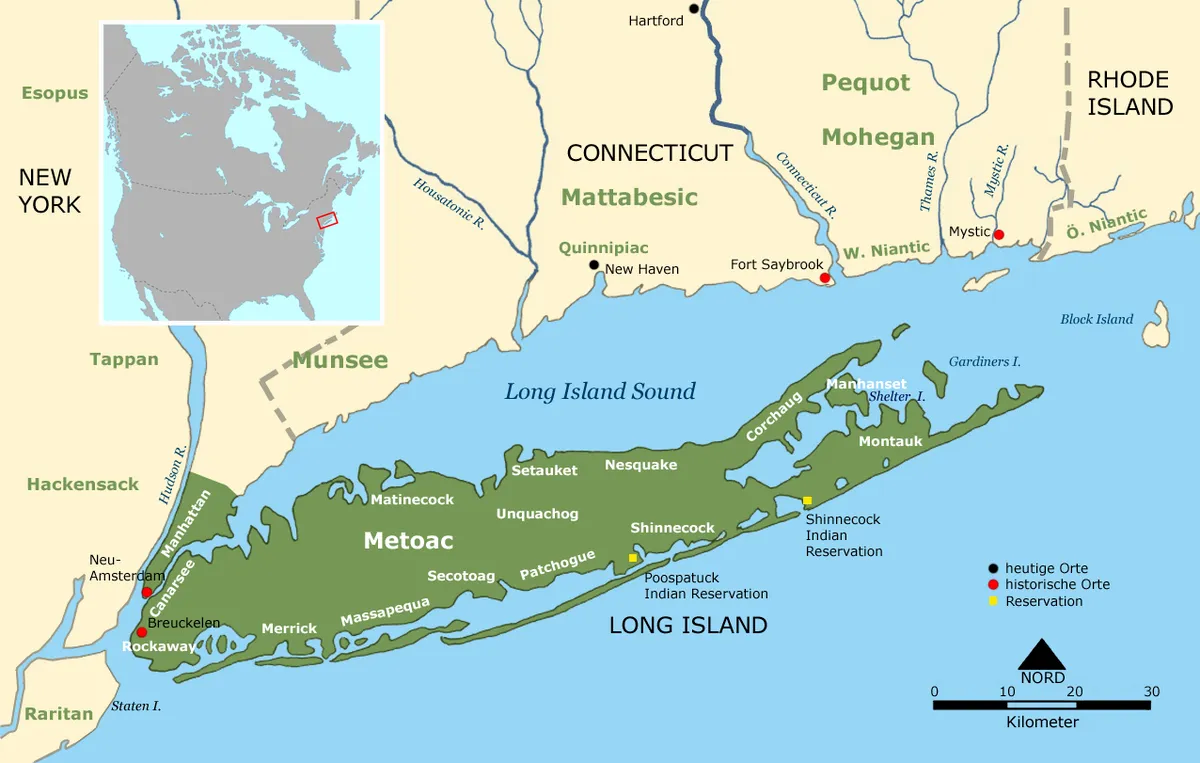Discover the vibrant world of New York’s Native American tribes and celebrate their rich heritage. Explore their unique languages, traditions, and profound impact on the Empire State’s history and culture.
Dive into the ancestral lands of the Haudenosaunee Confederacy, the Mohican, Munsee, and more with the New York Native American Tribes Map. For authentic Native American clothing and crafts, visit NativeAmericanClothes.com and immerse yourself in their artistic creations.
New York Native American Tribes Map (State)

Explore the Rich Heritage of New York’s Tribal Nations
Uncover the profound history of New York’s Tribal Nations with our meticulously crafted Tribal Nations of New York Map. This comprehensive map reveals the ancestral homelands of countless Native American tribes that thrived across the region before European contact. It showcases the tribes’ indigenous autonyms, providing a unique glimpse into their rich cultural heritage.
Preserving Indigenous Legacies
Many of these tribes, sadly, did not survive the European colonization. However, this map stands as a powerful tribute to their memory, ensuring that their names and legacies are never forgotten. It marks the first time that numerous Native American tribes have been honored on a map, underscoring the importance of preserving their heritage.
Celebrating Diversity and Pride
Our Tribal Nations of New York Map is dedicated to all Tribal Nations and Indigenous Peoples, fostering a sense of pride among Native Americans and Indigenous Peoples. Moreover, it serves as an educational tool, enlightening the broader public about the rich history of Native American and Indigenous Peoples in the region.
Explore the ancestral lands and vibrant history of New York’s Tribal Nations through our map, a testament to the enduring spirit and cultural significance of these indigenous communities.
Are there any Native American tribes in New York?

Oneida Native Peoples: A Glimpse into Their Rich Culture
Exploring Oneida Culture and Cuisine Delve into the captivating world of the Oneida Native Peoples, who originally inhabited the heart of New York. Their culture is a tapestry of traditions and practices that offer a unique glimpse into the rich history of this indigenous community.
A Unique Culinary Heritage
The Oneida tribe’s culinary practices set them apart from neighboring nations in New York. During the winter months when food was scarce, Oneida tribe members turned to the dry fruits and vegetables they had diligently harvested during the previous seasons. They were skilled in preserving meats using brine, and their diet was replete with hickory nuts, chestnuts, and walnuts.
Dance as Ceremonial Expression
Dance held a special place in the hearts of the Oneida people. Beyond mere entertainment, dance was a form of ceremonial expression. Notably, these ceremonial dances often bore names associated with food, such as the Maple Syrup and Strawberry dances, offering a unique blend of culture and celebration.
Significance of Traditional Clothing
In Oneida culture, clothing carried profound meaning. Prior to contact with colonists, they exclusively utilized natural materials for their attire, considering it a physical representation of their identity. Exploring Oneida clothing traditions unveils the deep cultural significance attached to their garments.
Embracing Gratitude and Environmental Connection
The Onondaga people, rooted in Onondaga County, New York, celebrate a culture steeped in gratitude and a profound connection to the environment that surrounds them.
Preserving Heritage through Rituals
Oral traditions and a commitment to preserving their heritage drive the Onondaga community to continue observing timeless rituals. The Strawberry Feast, Planting Feast, and Green Bean Dance punctuate the year, serving as occasions to express gratitude and honor the Creator.
Traditional Sports and Lacrosse
Traditionally, physical activity played a vital role in Onondaga culture. While European settlers introduced games like marbles, hide and seek, and blind man’s bluff, lacrosse held a special place in the hearts of the Onondaga people. This enduring love for lacrosse remains a testament to their rich sporting heritage.
Explore the Cultural Mosaic
Embark on a journey through the diverse cultures of the Oneida and Onondaga Native Peoples, gaining insights into their unique traditions, culinary practices, and the enduring significance of their cultural heritage.
Discovering the Nations of New York
New York State boasts a vibrant tapestry of indigenous cultures, each with its own unique traditions and contributions to the region’s history. Among these remarkable nations are the Mohawk, Oneida, Onondaga, Cayuga, Seneca, and Tuscarora, who call the Great Lakes and St. Lawrence River Valley home.
The League of the Haudenosaunee
At the heart of their heritage lies the League of the Haudenosaunee, often referred to as the “People of the Longhouse.” This alliance, or confederation, represents a powerful union of these nations, fostering cooperation, shared values, and collective strength. In historical terms, they were famously known as the “Five Nations Confederacy.”
The Evolution to the Six Nations
The narrative of these Native American nations took a significant turn with the inclusion of the Tuscarora, transforming the confederation into the “Six Nations.” This expansion enriched their cultural diversity and added a new dimension to their collective identity.
Preserving Traditions and Shaping the Future
Today, these nations continue to celebrate their rich heritage, preserving traditions that have been passed down through generations. Their enduring legacy is a testament to their resilience, strength, and the profound impact they have had on the history and culture of New York State.
Exploring the Cultural Mosaic
Embark on a journey through the vibrant cultures of New York State’s indigenous peoples. Gain insights into their unique traditions, the significance of their confederation, and the evolution of the Six Nations, all of which have left an indelible mark on the region’s history.
Where do Native Americans live in New York?

1. A Glimpse into New York State’s Diverse Indigenous Lands
New York State is not only renowned for its bustling cities and scenic landscapes but also for its rich tapestry of indigenous cultures. These communities have a deep-rooted connection to the land, and their reservations stand as a testament to their enduring heritage.
2. Allegany Reservation (Cattaraugus County)
Located in Cattaraugus County, the Allegany Reservation is a vital center of the Seneca Nation. This reservation is steeped in history, serving as a stronghold of Seneca culture and traditions.
3.Cattaraugus Reservation (Erie County, Cattaraugus County, Chautauqua County)
Spanning multiple counties, the Cattaraugus Reservation is a vibrant hub of the Seneca Nation. Its vast expanse encapsulates a rich tapestry of Seneca life and customs.
4.Cayuga Nation of New York (Seneca County)
In Seneca County, you’ll find the Cayuga Nation of New York, where the Cayuga people continue to honor their heritage and traditions.
5.Oil Springs (Cattaraugus County, Allegany County)
The Oil Springs Reservation, situated in both Cattaraugus and Allegany Counties, holds historical significance and remains integral to the Seneca Nation.
6.Oneida Indian Nation (Madison County)
Madison County is home to the Oneida Indian Nation, a community that has played a pivotal role in shaping the cultural landscape of New York.
7.Onondaga Reservation (Onondaga County)
The Onondaga Reservation, nestled in Onondaga County, serves as a vital center for the Onondaga Nation, where traditions are cherished and preserved.
8.Poospatuck Reservation (Suffolk County)
Suffolk County is home to the Poospatuck Reservation, a place where the Poospatuck people uphold their unique customs and heritage.
9.St. Regis Mohawk (Franklin County)
The St. Regis Mohawk Reservation, located in Franklin County, is a cornerstone of Mohawk culture and identity in New York.
10.Shinnecock Reservation (Suffolk County)
Suffolk County also hosts the Shinnecock Reservation, a place where the Shinnecock people celebrate their rich heritage.
11.Tonawanda Reservation (Genesee County, Erie County, Niagara County)
Spanning Genesee, Erie, and Niagara Counties, the Tonawanda Reservation is a significant cultural center for the Tonawanda Seneca Nation.
12.Tuscarora Reservation (Niagara County)
In Niagara County, the Tuscarora Reservation stands as a testament to the enduring traditions of the Tuscarora people.
13.Discovering New York’s Indigenous Heritage
Exploring these American Indian reservations in New York offers a unique opportunity to delve into the diverse and vibrant cultures that have enriched the state’s history. These reservations are more than just geographical locations; they are living testaments to the resilience and heritage of New York’s indigenous communities.
What native territory is in New York?

A Pledge to Recognize and Uphold Native American and Indigenous Rights
The New York City Commission on Human Rights (“Commission”) is embarking on a journey of acknowledgment and transformation, one that is deeply rooted in respect for the land’s original stewards and the communities that continue to thrive within its urban embrace.
A Homeland Reclaimed: Lenapehoking
We begin by acknowledging that the vibrant metropolis known as New York City is situated upon the ancestral homeland of the Lenape, aptly named Lenapehoking. For centuries, the Lenape people have maintained a profound connection to this land, embodying the essence of its rightful stewards.
A Tale of Displacement
Yet, we cannot ignore the historical injustices that have befallen the Lenape and other Native American and Indigenous communities. European settler colonialism led to a violent displacement spanning four centuries, leaving scars on the landscape and the people. The Commission recognizes this painful past and is committed to honoring the resilience and heritage of the Lenape.
A Beacon of Indigenous Diversity
New York City is home to one of the most vibrant and diverse urban Native American and Indigenous populations in the United States. The rich tapestry of cultures and traditions woven by these communities adds depth and richness to the city’s identity.
A Humble Recognition
The Commission humbly acknowledges that our past efforts have not always centered the voices and experiences of Native American and Indigenous communities. This realization underscores the urgent need for change.
Forging a New Path
We stand at a pivotal moment in history, where we commit to building lasting and meaningful relationships with the Lenape and all Native American and Indigenous peoples. These relationships will be built on a foundation of equality, respect, and collaboration.
Amplifying Indigenous Voices
Our pledge is to provide a platform where Native American and Indigenous leaders can lead the way, directing our services and initiatives in a manner that best serves the citizens of these nations and members of these communities.
A Future of Inclusivity and Justice
The Commission on Human Rights in New York City is dedicated to weaving a tapestry of inclusivity and justice. By acknowledging our past, embracing our present, and committing to a more equitable future, we honor the diverse and resilient communities that shape our great city. Together, we move forward with unity, strength, and a deep respect for the original caretakers of this land.
Explore the Rich Heritage: New York Native American Tribes Map (State). Uncover the cultural tapestry of New York as you navigate through the ancestral territories of diverse Native American tribes. Delve into the history, traditions, and stories etched into the very land we stand on today. This comprehensive map is your gateway to a deeper understanding of the indigenous roots that continue to thrive in the Empire State.
You may also like Michigan Native American Tribes Map




